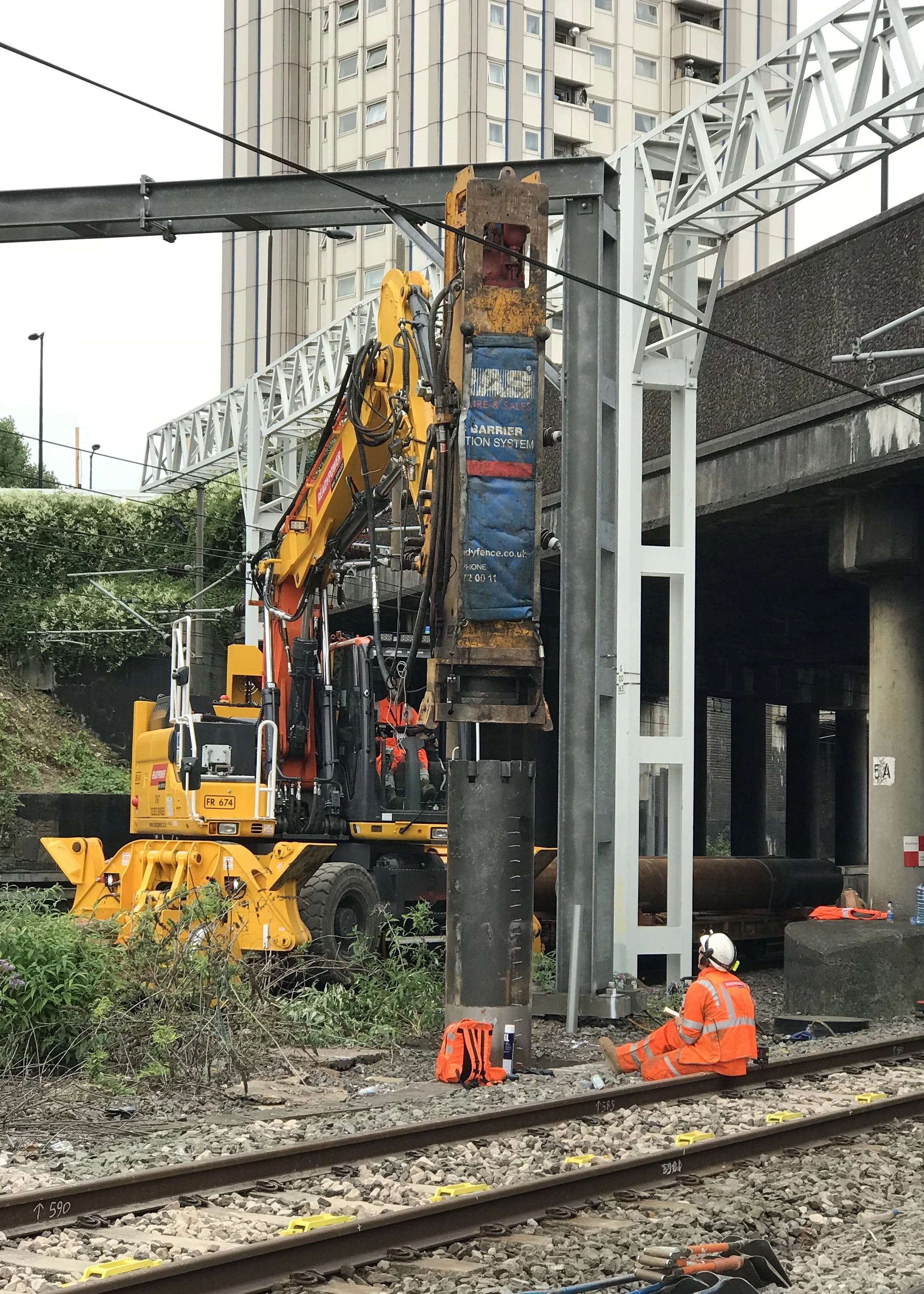Project Overview: This case study examines the piling operations conducted at Euston Station as part of the infrastructure improvements for HS2 access. The works, managed by Colas Rail, Network Rail, and HS2, were essential for replacing the overhead line system at the west end of the station, which had reached the end of its operational life. The project spanned two weekends and involved the removal of existing support structures, deconstruction and cutting of these structures for removal by train, and the installation of new overhead line (OH) structures. Given the proximity of local residents to the site, noise and dust management were key concerns, leading to the deployment of the Sentry Camera System.
Challenges Encountered:
Noise Pollution During Piling Operations: The installation of new OH structures required driven piles to support them, which generated significant noise, particularly during the pile-driving process. One pile, located just 60 metres from a Sentry Camera, registered a noise level of 102dB(A) with each strike. This level of noise was a major concern for local residents, who were already complaining about the overnight preparatory works. Managing and mitigating this noise pollution was a critical challenge.
Environmental Compliance: The local Environmental Health Officer (EHO) had set strict noise and environmental limits, making compliance a top priority for the project team. Any breaches in these limits could result in fines, legal action, or project delays. The need for constant noise and dust monitoring was paramount to ensure that the site adhered to the environmental guidelines.
Resident Relations: Local residents had voiced concerns about the impact of the works, particularly the noise generated during the night. With a complex and busy site, maintaining a positive relationship with the community while minimising disruptions was a significant challenge.
Solutions Implemented:
Deployment of Sentry Camera System: The Sentry Camera System was strategically deployed to provide a live view of the works, with continuous noise and dust measurement. This real-time monitoring allowed the project team to ensure compliance with environmental limits and respond quickly to any issues that arose. The cameras were placed in four key locations around the site: one at the northern end of the works and three on the west side to protect the closest 'lineside neighbours'.
Proactive Engagement with Local EHO: On Sunday morning, the local EHO visited the site following a noise complaint from the previous night. The Sentry footage proved invaluable in this situation, as it clearly showed that no piling works were taking place at the time of the complaint. Instead, the cameras captured noise coming from a private members club adjacent to the site, where rowdy customers were disposing of waste bottles into a skip between 2 AM and 4 AM. This evidence not only helped avoid potential prosecution for noise breaches but also strengthened the project team's credibility with the local EHO and residents.
Post-Analysis for Future Improvements: Beyond compliance, the Sentry footage was used for post-analysis to identify efficiencies and improvements for future deployments. By reviewing the footage, the team could pinpoint areas for lean improvement, reducing downtime and enhancing the overall execution of the works.
Results and Key Takeaways:
Noise Compliance and Issue Resolution: The deployment of the Sentry Camera System successfully ensured compliance with environmental noise limits, despite the challenging nature of the piling operations. The real-time monitoring and ability to provide evidence during the EHO visit were crucial in resolving the noise complaint and avoiding penalties.
Improved Relations with Local Residents: The accurate and transparent monitoring of noise levels helped improve engagement with local residents. By addressing concerns promptly and providing clear evidence of compliance, the project team built trust with the community, which will be beneficial for future works in the area.
Lean Improvement in Operations: The post-analysis of the Sentry footage led to valuable insights into worksite efficiency. Identifying areas where time and resources could be saved contributed to a more streamlined approach for future operations, ultimately reducing the project's impact on the local environment and community.
Additional Benefits: The Sentry System provided benefits beyond noise compliance, including enhancing safety, documenting the worksite for future reference, and enabling better planning for subsequent projects. This multi-faceted approach demonstrated the system's value as a comprehensive tool for project management.
Conclusion:
The piling operations at Euston Station showcase the importance of proactive environmental management and community engagement in complex infrastructure projects. By deploying the Sentry Camera System, the project team successfully navigated the challenges of noise pollution and compliance, while also improving operational efficiency and resident relations. This case study highlights how technology can play a critical role in ensuring successful project delivery while minimising the impact on the surrounding community.


